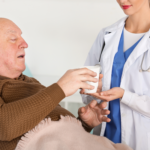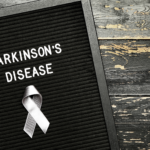Parkinson’s disease is best recognized by its motor symptoms—namely tremor. But it surprised our research team, and it may surprise you as well, to learn that 87 percent of people with Parkinson’s surveyed said they noticed non-motor symptoms first; and 78 percent said they noticed non-motor symptoms even before they were formally diagnosed with Parkinson’s.
We conducted the informal survey on Facebook. The simple, single-question survey asked: “When did you first experience non-motor symptoms of Parkinson’s disease (pain, depression, insomnia, anxiety, etc.)?” We received over 100 responses, broken down as follows:
- 78 percent of respondents said they experienced non-motor symptoms before motor symptoms, and before their formal Parkinson’s diagnosis
- 9 percent said they experienced non-motor symptoms after PD diagnosis, but before motor symptoms
- 11 percent said they experienced non-motor symptoms after PD diagnosis, and after motor symptoms
- 2 percent said they had never heard of or experienced non-motor symptoms
“With such a high percentage of people with Parkinson’s recognizing non-motor symptoms, it’s no wonder the International Movement Disorder Society has declared addressing non-motor symptoms a top priority,” said Brett Walker, spokesman with PhotoPharmics, a Utah medical device company working to address neurodegenerative disease like Parkinson’s. “Simple studies like ours provide interesting insight into what it might be like to live through the Parkinson’s disease experience.”
A leader in the fight against Parkinson’s, the Parkinson’s Foundation states, “it’s important to realize that non-motor symptoms are common and can be more troublesome and disabling than motor symptoms. That’s why you should watch for these symptoms and discuss early changes with your doctor.” Parkinson.org lists non-motor symptoms of Parkinson’s disease as (but not limited to) depression, anxiety, delusions, hallucinations, insomnia, incontinence, pain, loss of senses, sexual problems, and more.
More than ten million people worldwide have been diagnosed with Parkinson’s disease, and as this and other surveys suggest, potentially countless others are suffering without formal diagnosis.
To this end, PhotoPharmics is extending its 30-year track record in light therapy innovation to address the troubling non-motor symptoms of Parkinson’s disease with a new specialized phototherapy device. This device, which recently received Breakthrough Device Designation by the FDA, uses light in proprietary frequencies and intensities to stimulate the photoreceptors in the brain and help regulate the body’s natural circadian rhythm and curb the neurodegenerative effects of Parkinson’s disease.
“Very few device companies receive FDA Breakthrough Device Designation. Our device is the first specialized phototherapy device to achieve this status,” said Kent Savage, CEO of PhotoPharmics. “Our focus is to help people with Parkinson’s improve function and return to what they enjoy doing most. We think this recognition by FDA validates our work.”
The device is slated to undergo phase-three clinical trials later this year. To learn more about what PhotoPharmics is doing to address the non-motor symptoms of Parkinson’s disease, visit PhotoPharmics.com/connect.





